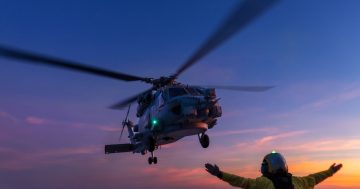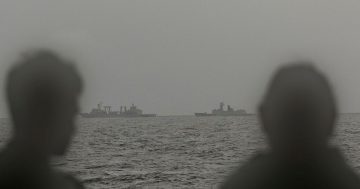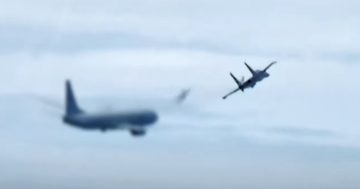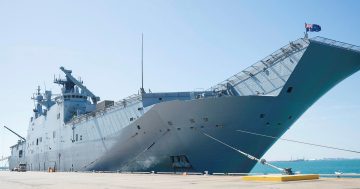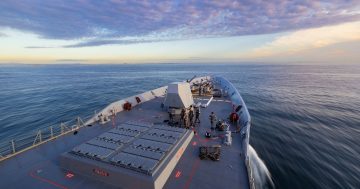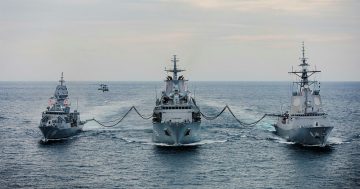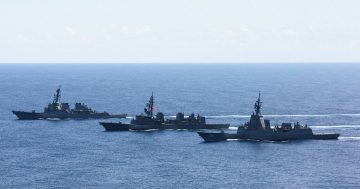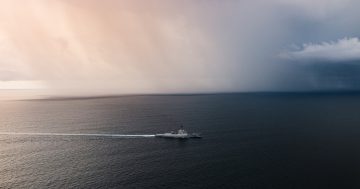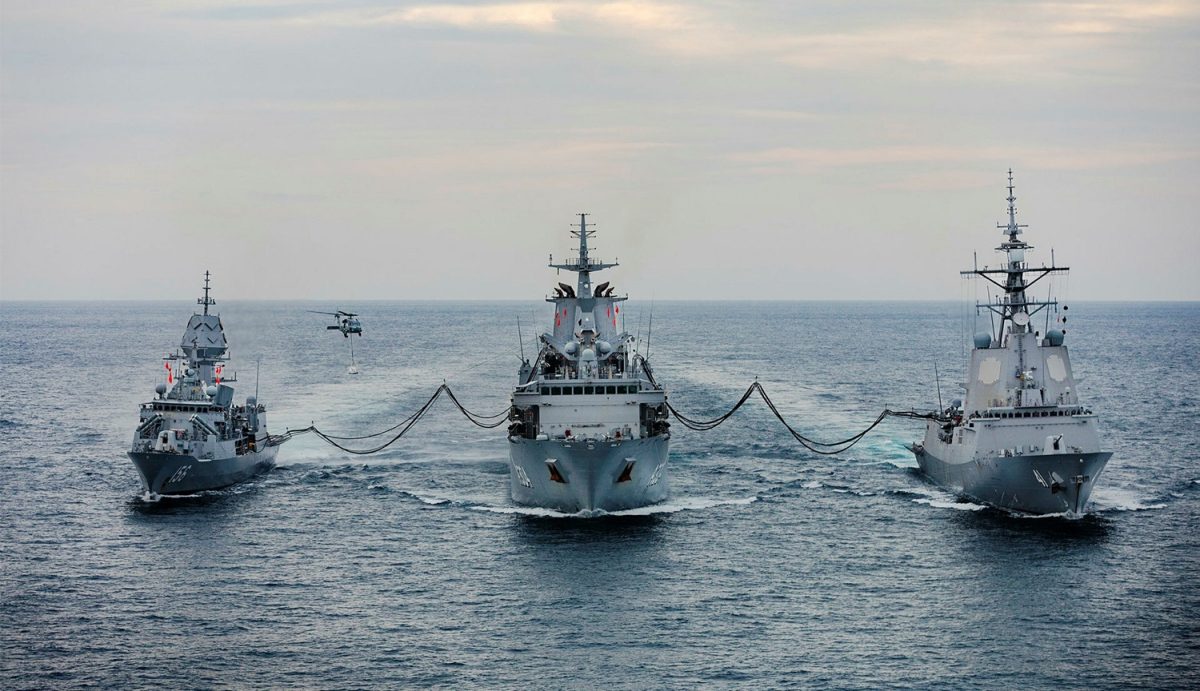
(L-R) HMA Ships Toowoomba, Stalwart and Brisbane and Toowoomba’s helicopter conduct replenishment operations on 8 November during a regional presence deployment in Asian waters. Photo: ADF
Divers from the Royal Australian Navy Anzac class frigate HMAS Toowoomba were allegedly injured by sonar waves from a Chinese People’s Liberation Army Navy (PLA-N) destroyer on 14 November.
HMAS Toowoomba was stopped in international waters in Japan’s exclusive economic zone while divers reportedly cleared fishing nets that had fouled the vessel’s propellor.
An 18 November Defence release says the Chinese destroyer – identified as DDG-139 hull number, which is the Type 956EM vessel Ningbo – approached Toowoomba. The release says the Chinese vessel was warned repeatedly that diving operations were underway and that it was asked to keep clear.
“Despite acknowledging Toowoomba’s communications, the Chinese vessel approached at a closer range,” the release says.
“Soon after, it was detected operating its hull-mounted sonar in a manner that posed a risk to the safety of the Australian divers who were forced to exit the water.”
The Ningbo is one of four modified Sovremenny class vessels in service with the PLA-N. These powerful ships were built in Russia, and while most in Russian service have been retired, four were built for China and entered service between 1999 and 2006.
Sonar is a high-volume sound wave generated by a vessel. If the sound wave bounces off an object, such as the ocean floor or a submarine, it returns the signal to the sender and, much like radar, paints a picture of what is around the vessel.
Sonar waves can feel like a sudden pressure wave to divers or marine life. The sonar signal’s strength can be varied by the processor on board a transmitting vessel and, if sent out at a high level, can cause symptoms similar to Human Decompression Sickness (DCS) – more commonly known as the ‘bends’. This can result in dizziness, hearing damage, or in a worst-case scenario, severe organ damage to any divers in the water.
The use of sonar has also been linked to the deaths of some marine life, such as whales and dolphins, and most professional navies have very strict protocols about its use in proximity to dive operations, or known concentrations of marine life, such as whale migration routes.
“This is unsafe and unprofessional conduct,” the release states.
“Medical assessments conducted after the divers exited the water identified they had sustained minor injuries likely due to being subjected to the sonar pulses from the Chinese destroyer.
“Australia expects all countries, including China, to operate their militaries in a professional and safe manner.”
HMAS Toowoomba was tasked with a regional presence deployment to enforce United Nations economic sanctions on North Korea. Before the incident, it had just completed manoeuvres with the destroyer HMAS Brisbane and auxiliary oiler replenishment (AOR) vessel HMAS Stalwart.
It is unclear whether Prime Minister Anthony Albanese raised the incident with Chinese President Xi Jinping at last week’s APAC meeting in San Francisco, but it’s unlikely the details of any such discussions would be made public.
Original Article published by Andrew McLaughlin on Riotact.


